Development of composite materials has increased rapidly in different fields of sciences. This offers new structures of reinforcement materials and risen. More recently, the use of nanomaterials as reinforcement materials has proliferated. This research studies the mechanical properties and electrical characteristics of hybrid composite materials. Glass reinforced epoxy (GRE) was used as a basic composite in addition to the nanomaterial which was mixed with the risen using different percentages. Multi-wall carbon nanotubes (MWCNT) and Silica (Silicon Dioxide SiO2) were used as nano-particles. The ratios of nano-particles used to reinforce the Epoxy were (0.1, 0.2, and 0.5%) of weight ratio for MWCNT and (1, 2, and 5%) of weight ratio for Silica nanoparticles (SiO2). The results showed that the ultimate strength for GRE with 0.1 wt%MWCNT-1 wt%SiO2 was the highest, while Young’ modulus for GRE with 0.2 wt%MWCNT-2 wt%SiO2 was the highest. In addition, the samples with 0.1 wt%MWCNT-1 wt%SiO2 showed a magnificent value of electric conductivity. Having finished the mechanical tests, the fracture surfaces were comparatively examined using scanning electron microscopy (SEM).
1.
Introduction
L. Carlitz ([1]) introduced analogues of Bernoulli numbers for the rational function (finite) field K=Fr(T), which are called Bernoulli-Carlitz numbers now. Bernoulli-Carlitz numbers have been studied since then (e.g., see [2,3,4,5,6]). According to the notations by Goss [7], Bernoulli-Carlitz numbers BCn are defined by
Here, eC(x) is the Carlitz exponential defined by
where Di=[i][i−1]r⋯[1]ri−1 (i≥1) with D0=1, and [i]=Tri−T. The Carlitz factorial Π(i) is defined by
for a non-negative integer i with r-ary expansion:
As analogues of the classical Cauchy numbers cn, Cauchy-Carlitz numbers CCn ([8]) are introduced as
Here, logC(x) is the Carlitz logarithm defined by
where Li=[i][i−1]⋯[1] (i≥1) with L0=1.
In [8], Bernoulli-Carlitz numbers and Cauchy-Carlitz numbers are expressed explicitly by using the Stirling-Carlitz numbers of the second kind and of the first kind, respectively. These properties are the extensions that Bernoulli numbers and Cauchy numbers are expressed explicitly by using the Stirling numbers of the second kind and of the first kind, respectively.
On the other hand, for N≥1, hypergeometric Bernoulli numbers BN,n ([9,10,11,12]) are defined by the generating function
where
is the confluent hypergeometric function with (x)(n)=x(x+1)⋯(x+n−1) (n≥1) and (x)(0)=1. When N=1, Bn=B1,n are classical Bernoulli numbers defined by
In addition, hypergeometric Cauchy numbers cN,n (see [13]) are defined by
where
is the Gauss hypergeometric function. When N=1, cn=c1,n are classical Cauchy numbers defined by
In [14], for N≥0, the truncated Bernoulli-Carlitz numbers BCN,n and the truncated Cauchy-Carlitz numbers CCN,n are defined by
and
respectively. When N=0, BCn=BC0,n and CCn=CC0,n are the original Bernoulli-Carlitz numbers and Cauchy-Carlitz numbers, respectively. These numbers BCN,n and CCN,n in (1.9) and (1.10) in function fields are analogues of hypergeometric Bernoulli numbers in (1.7) and hypergeometric Cauchy numbers in (1.8) in complex numbers, respectively. In [15], the truncated Euler polynomials are introduced and studied in complex numbers.
It is known that any real number α can be expressed uniquely as the simple continued fraction expansion:
where a0 is an integer and a1,a2,… are positive integers. Though the expression is not unique, there exist general continued fraction expansions for real or complex numbers, and in general, analytic functions f(x):
where a0(x),a1(x),… and b1(x),b2(x),… are polynomials in x. In [16,17] several continued fraction expansions for non-exponential Bernoulli numbers are given. For example,
More general continued fractions expansions for analytic functions are recorded, for example, in [18]. In this paper, we shall give expressions for truncated Bernoulli-Carlitz numbers and truncated Cauchy-Carlitz numbers.
In [19], the hypergeometric Bernoulli numbers BN,n (N≥1, n≥1) can be expressed as
When N=1, we have a determinant expression of Bernoulli numbers ([20,p.53]). In addition, relations between BN,n and BN−1,n are shown in [19].
In [21,22], the hypergeometric Cauchy numbers cN,n (N≥1, n≥1) can be expressed as
When N=1, we have a determinant expression of Cauchy numbers ([20,p.50]).
Recently, in ([23]) the truncated Euler-Carlitz numbers ECN,n (N≥0), introduced as
are shown to have some determinant expressions. When N=0, ECn=EC0,n are the Euler-Carlitz numbers, denoted by
where
is the Carlitz hyperbolic cosine. This reminds us that the hypergeometric Euler numbers EN,n ([24]), defined by
have a determinant expression [25,Theorem 2.3] for N≥0 and n≥1,
When N=0, we have a determinant expression of Euler numbers (cf. [20,p.52]). More general cases are studied in [26].
In this paper, we also give similar determinant expressions of truncated Bernoulli-Carlitz numbers and truncated Cauchy-Carlitz numbers as natural extensions of those of hypergeometric numbers.
2.
Continued fraction expansions of truncated Bernoulli-Carlitz and Cauchy-Carlitz numbers
Let the n-th convergent of the continued fraction expansion of (1.12) be
There exist the fundamental recurrence formulas:
with P−1(x)=1, Q−1(x)=0, P0(x)=a0(x) and Q0(x)=1.
From the definition in (1.9), truncated Bernoulli-Carlitz numbers satisfy the relation
Thus,
yield that
Notice that the n-th convergent pn/qn of the simple continued fraction (1.11) of a real number α yields the approximation property
Now,
and Pn(x) and Qn(x) (n≥2) satisfy the recurrence relations
(They are proved by induction). Since by (2.2) for n≥2
we have the following continued fraction expansion.
Theorem 1.
Put N=0 in Theorem 1 to illustrate a simpler case. Then, we have a continued fraction expansion concerning the original Bernoulli-Carlitz numbers.
Corollary 1.
From the definition in (1.10), truncated Cauchy-Carlitz numbers satisfy the relation
Thus,
yield that
Now,
and Pn(x) and Qn(x) (n≥2) satisfy the recurrence relations
Since by (2.2) for n≥2
we have the following continued fraction expansion.
Theorem 2.
3.
A determinant expression of truncated Cauchy-Carlitz numbers
In [14], some expressions of truncated Cauchy-Carlitz numbers have been shown. One of them is for integers N≥0 and n≥1,
[14,Theorem 2].
Now, we give a determinant expression of truncated Cauchy-Carlitz numbers.
Theorem 3. For integers N≥0 and n≥1,
where
with
We need the following Lemma in [27] in order to prove Theorem 3.
Lemma 1. Let {αn}n≥0 be a sequence with α0=1, and R(j) be a function independent of n. Then
if and only if
with α0=1.
Proof of Theorem 3. By the definition (1.10) with (1.6), we have
Thus, for n≥1, we get
By Lemma 1, we have
Examples. When n=rN+1−rN,
Let n=rN+2−rN. For simplicity, put
Then by expanding at the first column, we have
The second term is equal to
The first term is
Therefore,
From this procedure, it is also clear that CCN,n=0 if rN+1−rN∤n, since all the elements of one column (or row) become zero.
4.
A determinant expression of truncated Bernoulli-Carlitz numbers
In [14], some expressions of truncated Bernoulli-Carlitz numbers have been shown. One of them is for integers N≥0 and n≥1,
[14,Theorem 1].
Now, we give a determinant expression of truncated Bernoulli-Carlitz numbers.
Theorem 4. For integers N≥0 and n≥1,
where
with δ∗l as in (3.2).
Proof. The proof is similar to that of Theorem 3, using (1.9) and (1.2).
Example. Let n=2(rN+1−rN). For convenience, put
Then, we have
It is also clear that BCN,n=0 if rN+1−rN∤n.
5.
Applications by the Trudi's formula
We shall use Trudi's formula to obtain different explicit expressions and inversion relations for the numbers CCN,n and BCN,n.
Lemma 2. For a positive integer n, we have
where (t1+⋯+tnt1,…,tn)=(t1+⋯+tn)!t1!⋯tn! are the multinomial coefficients.
This relation is known as Trudi's formula [28,Vol.3,p.214], [29] and the case a0=1 of this formula is known as Brioschi's formula [30], [28,Vol.3,pp.208–209].
In addition, there exists the following inversion formula (see, e.g. [27]), which is based upon the relation
Lemma 3. If {αn}n≥0 is a sequence defined by α0=1 and
From Trudi's formula, it is possible to give the combinatorial expression
By applying these lemmata to Theorem 3 and Theorem 4, we obtain an explicit expression for the truncated Cauchy-Carlitz numbers and the truncated Bernoulli-Carlitz numbers.
Theorem 5. For integers N≥0 and n≥1, we have
where an are given in Theorem 3.
Theorem 6. For integers N≥0 and n≥1, we have
where dn are given in Theorem 4.
By applying the inversion relation in Lemma 3 to Theorem 3 and Theorem 4, we have the following.
Theorem 7. For integers N≥0 and n≥1, we have
where an is given in Theorem 3.
Theorem 8. For integers N≥0 and n≥1, we have
where dn is given in Theorem 4.
Acknowledgments
We would like to thank the referees for their valuable comments.
Conflict of interest
The authors declare no conflict of interest.











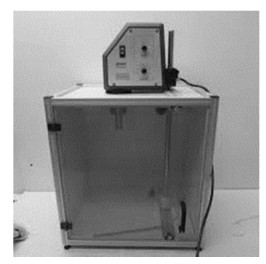
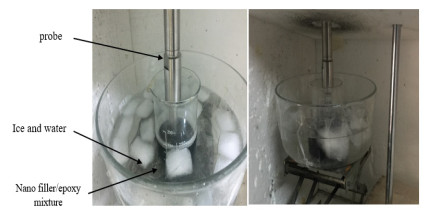
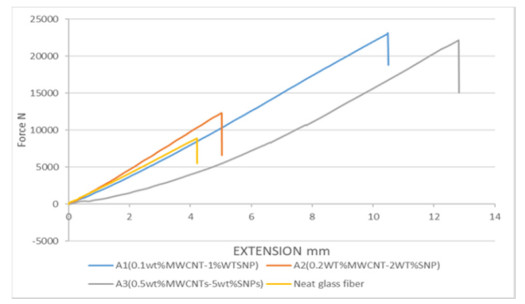
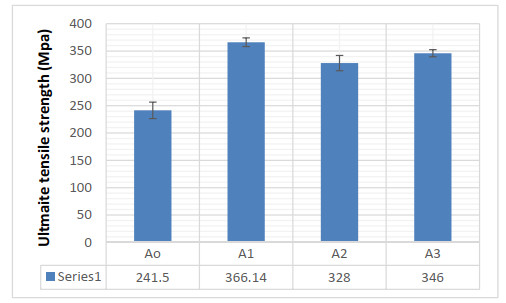
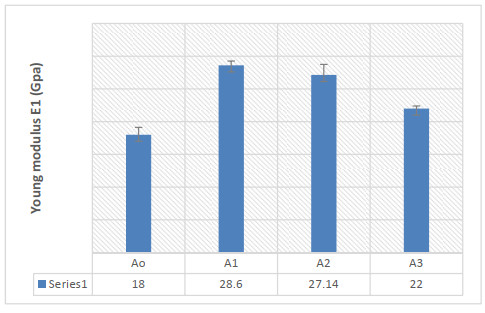




 DownLoad:
DownLoad: